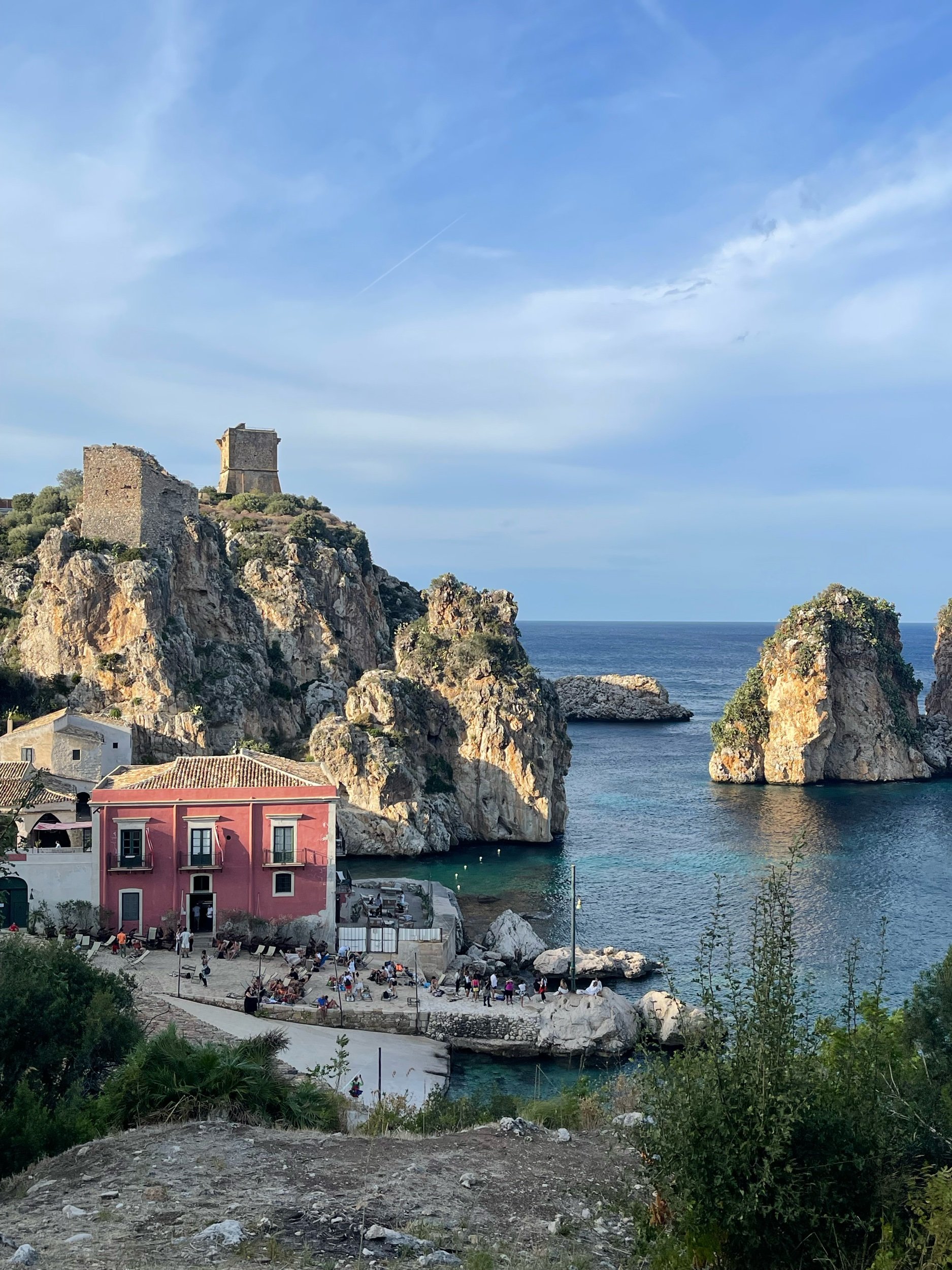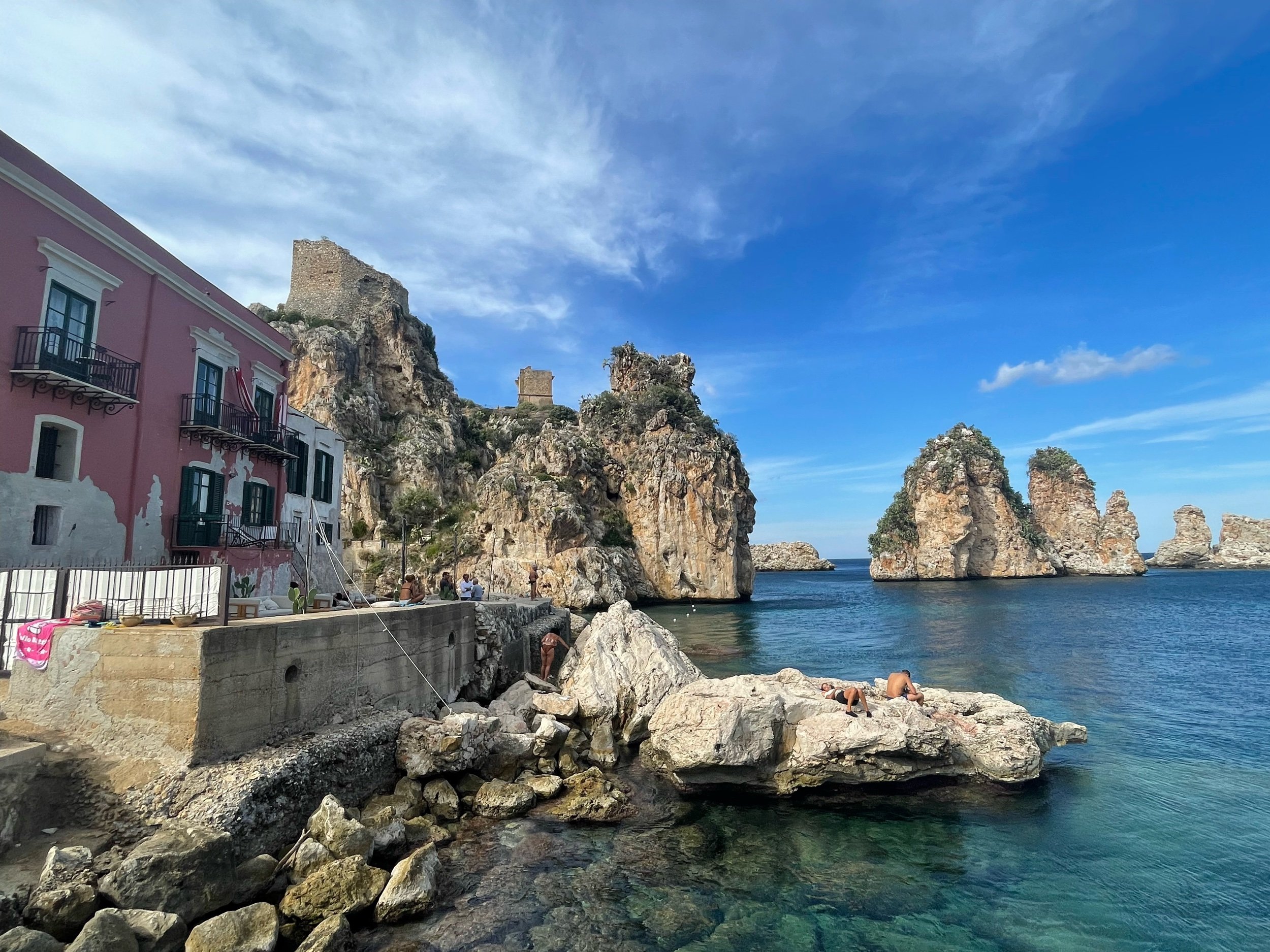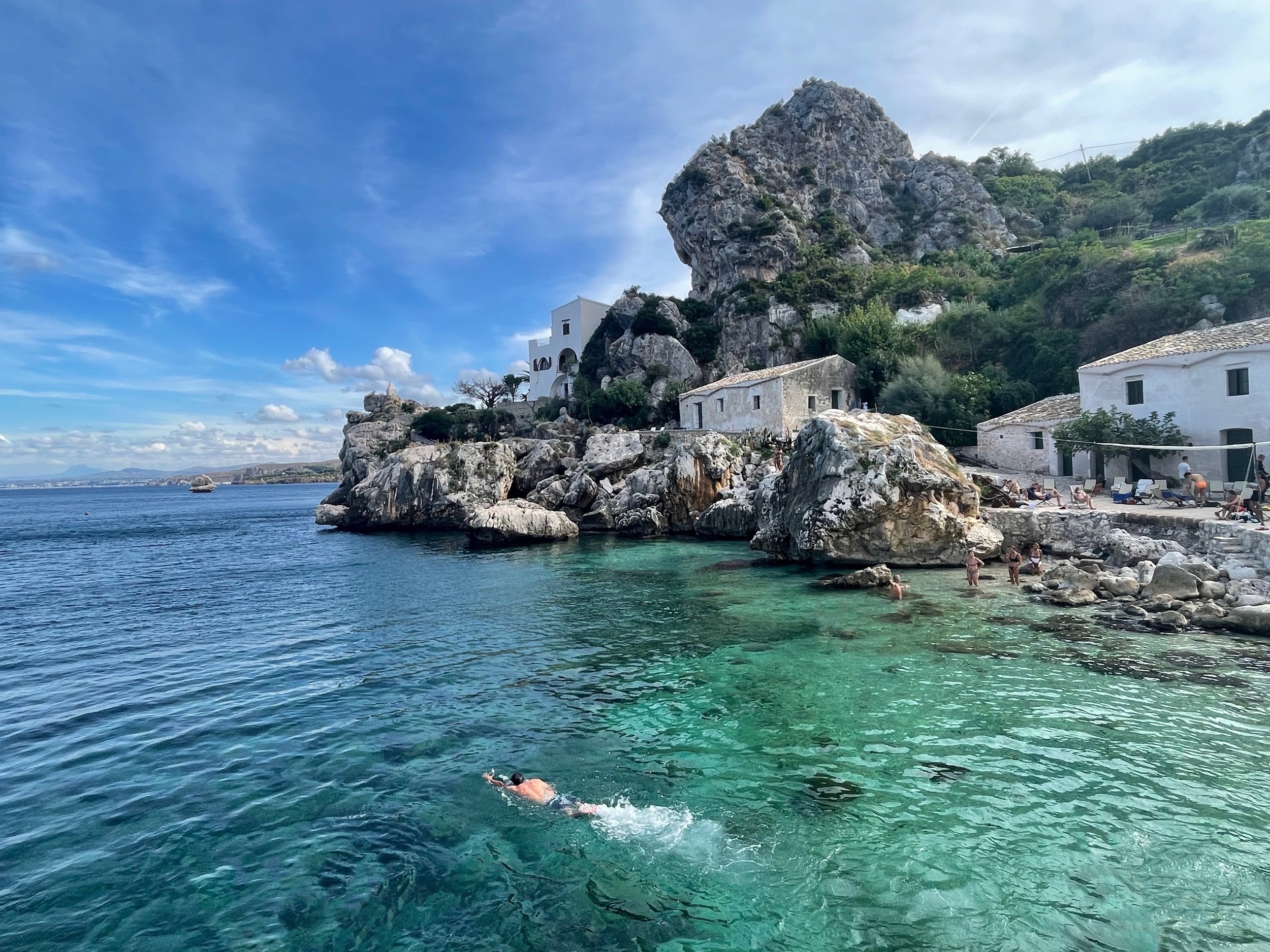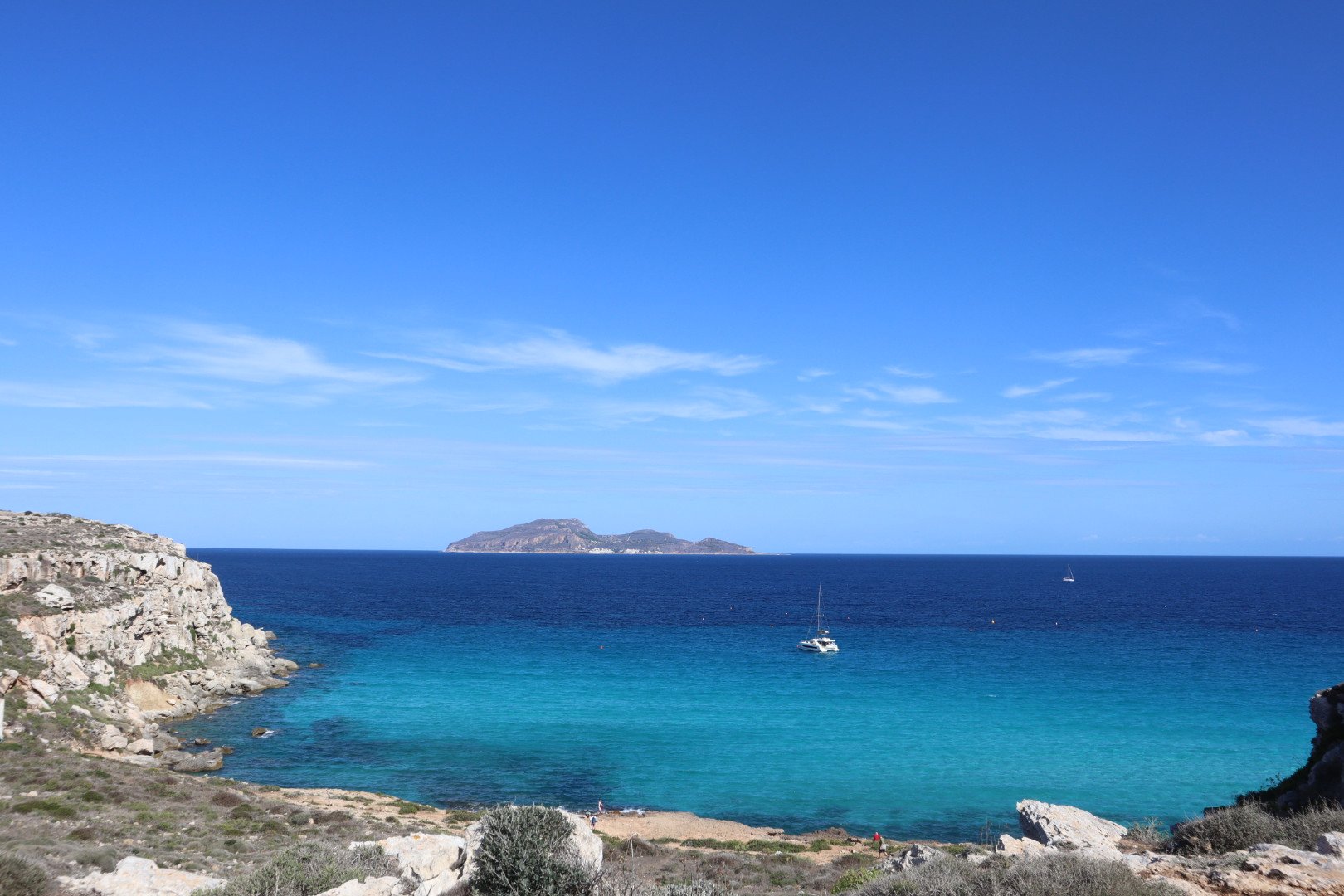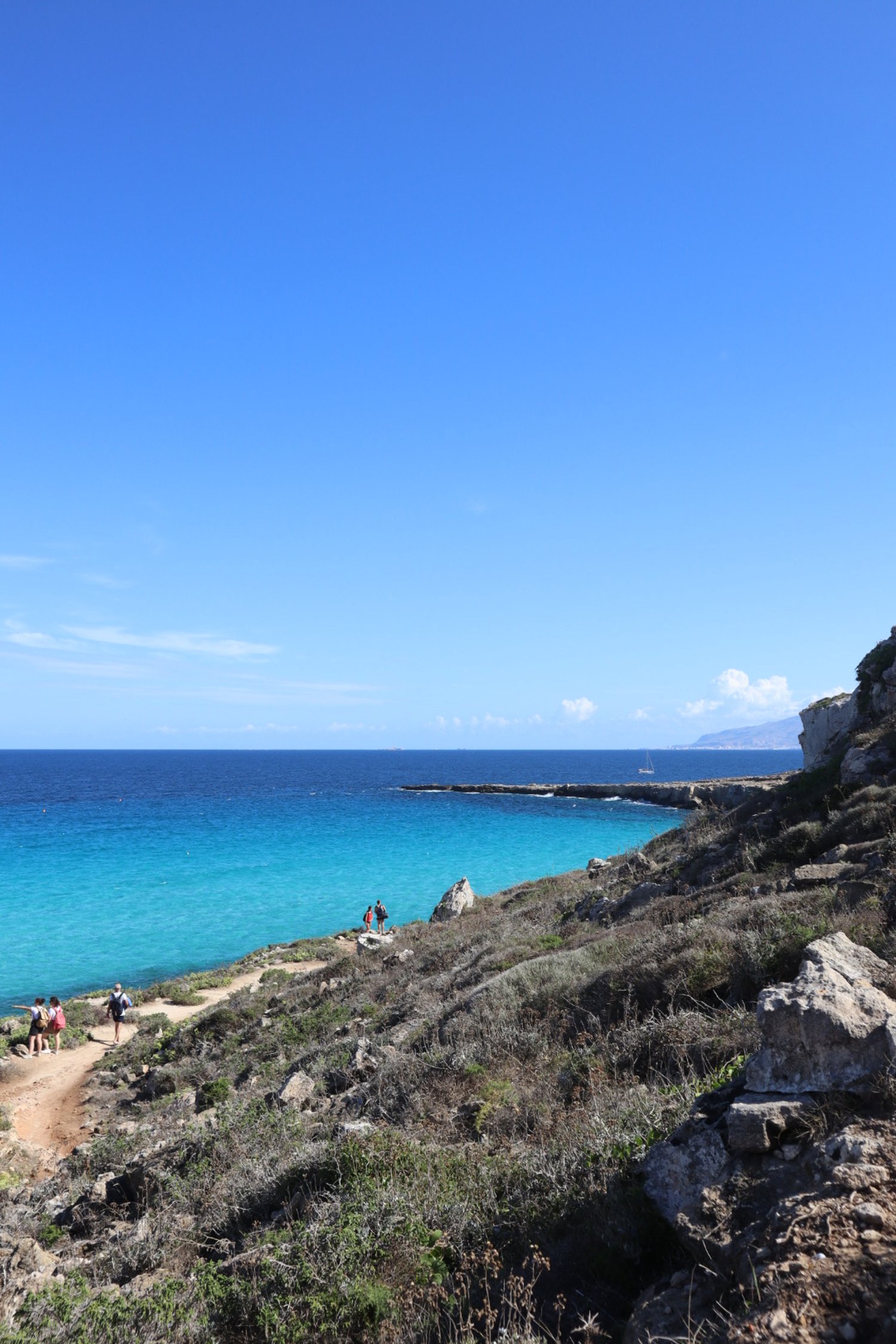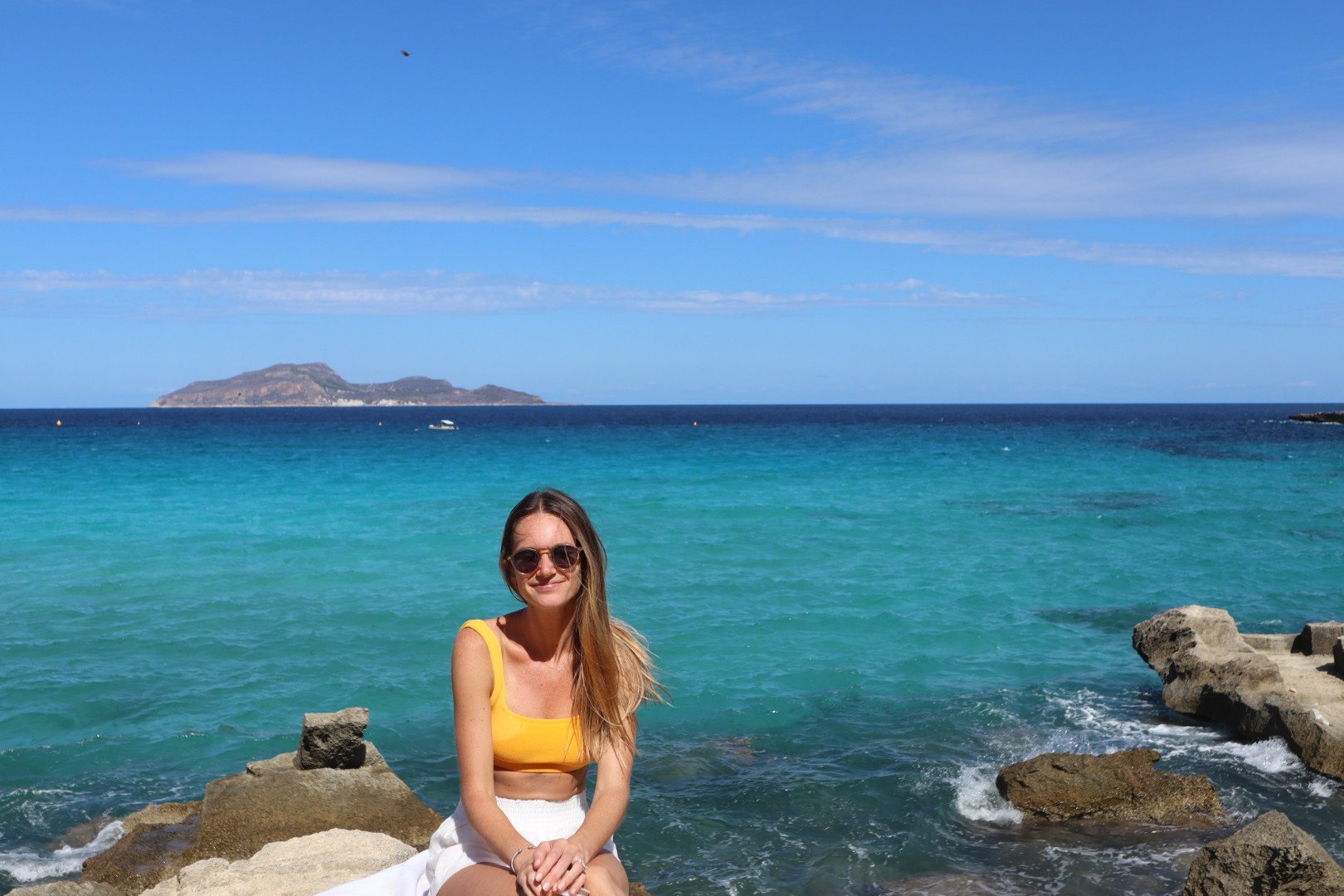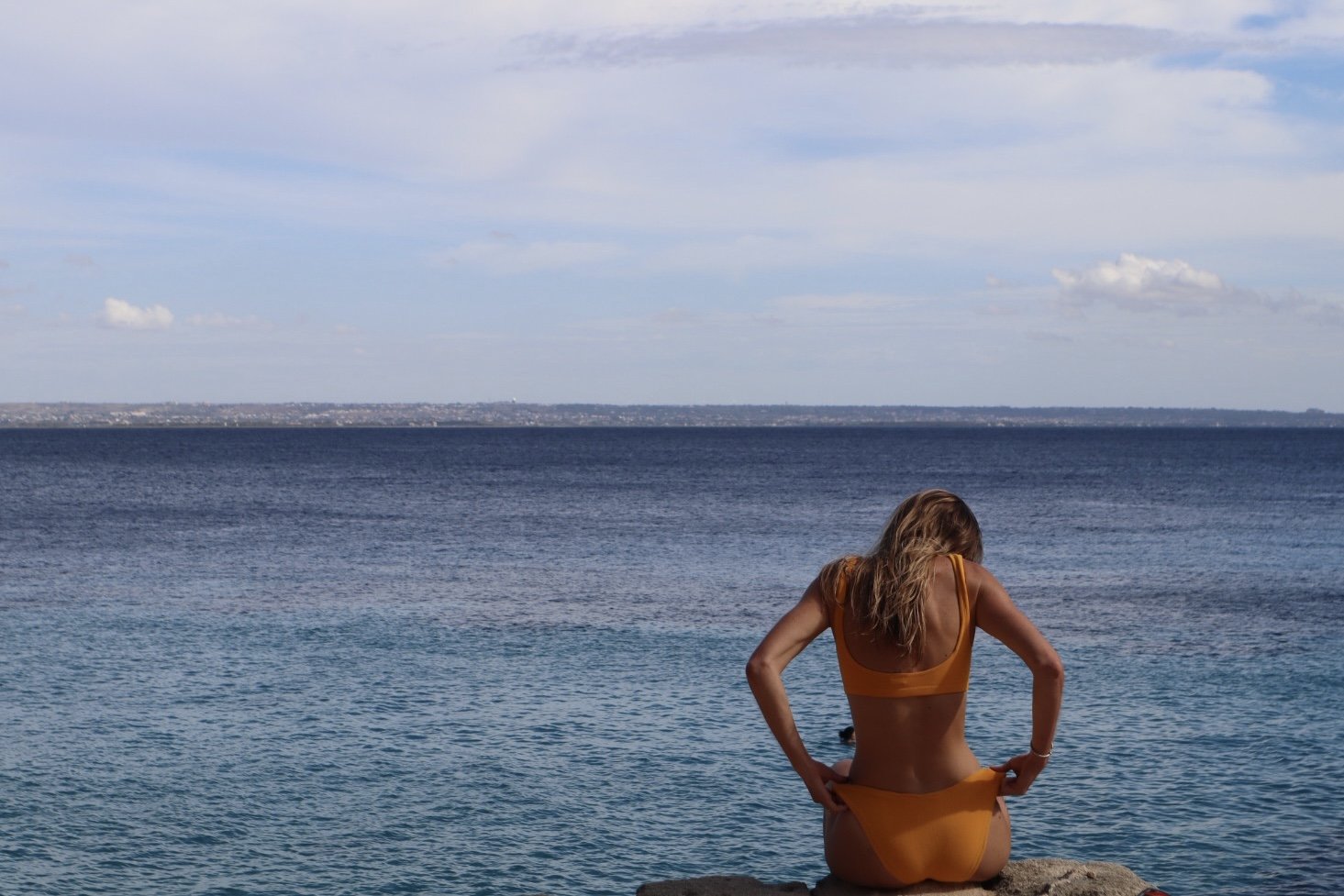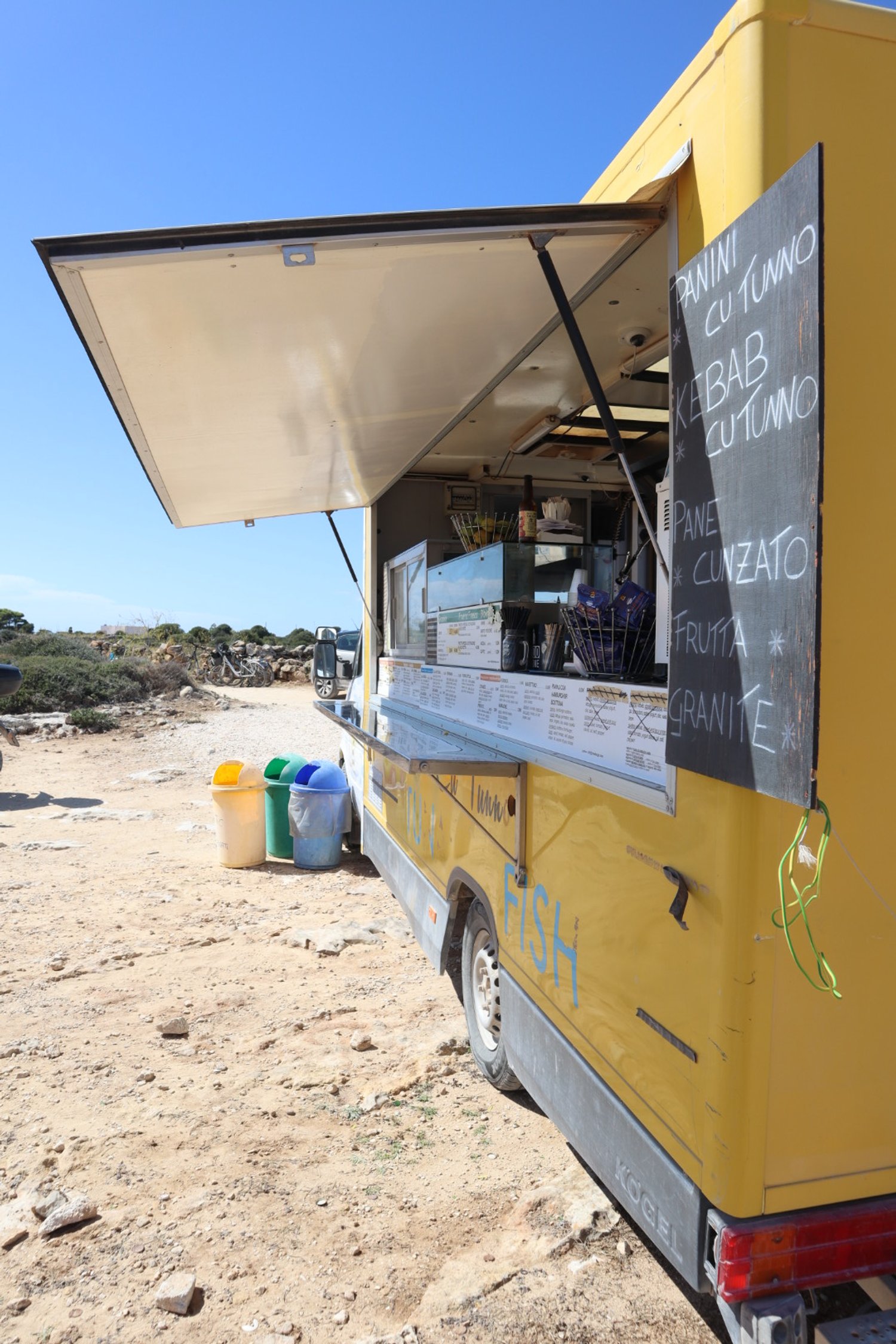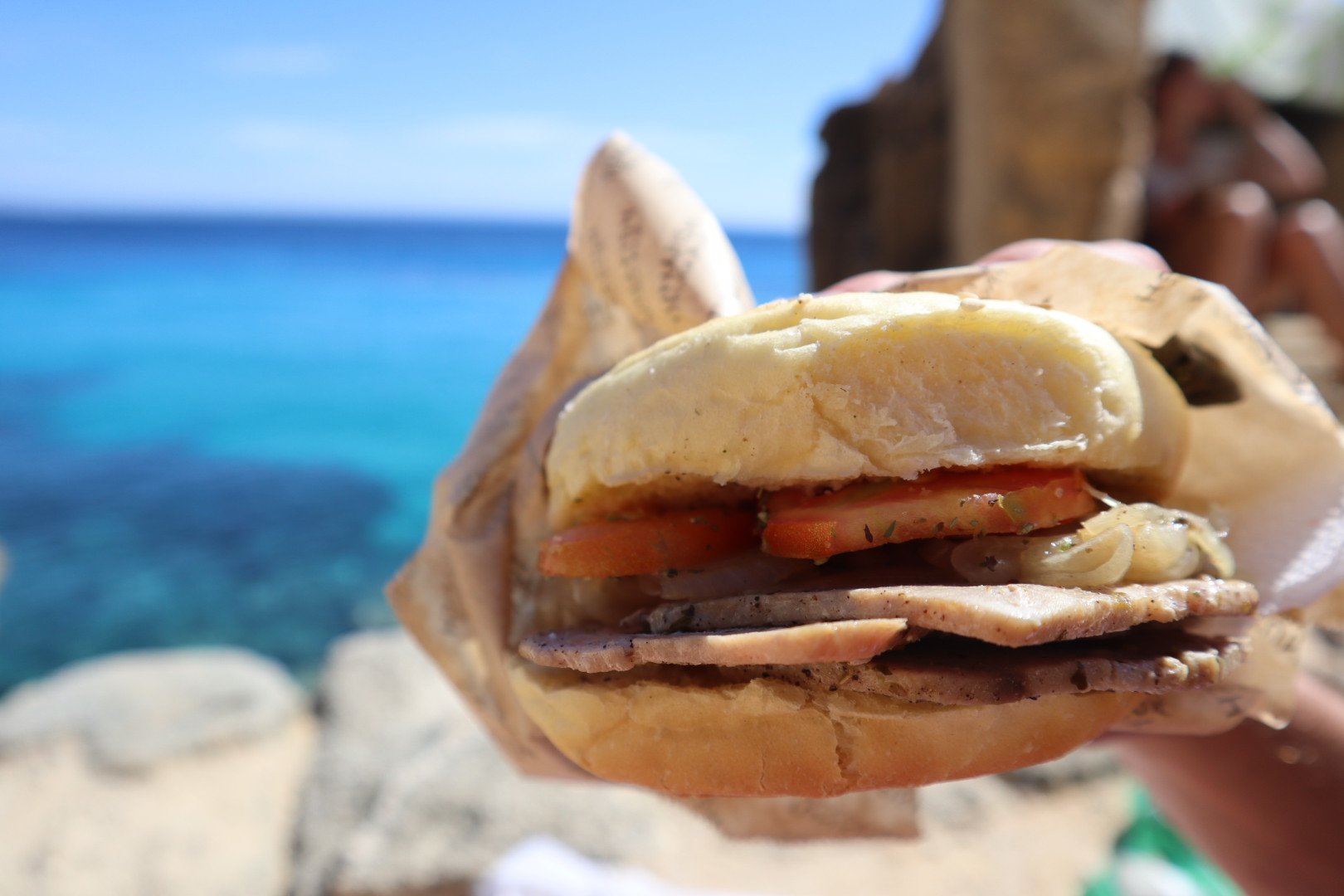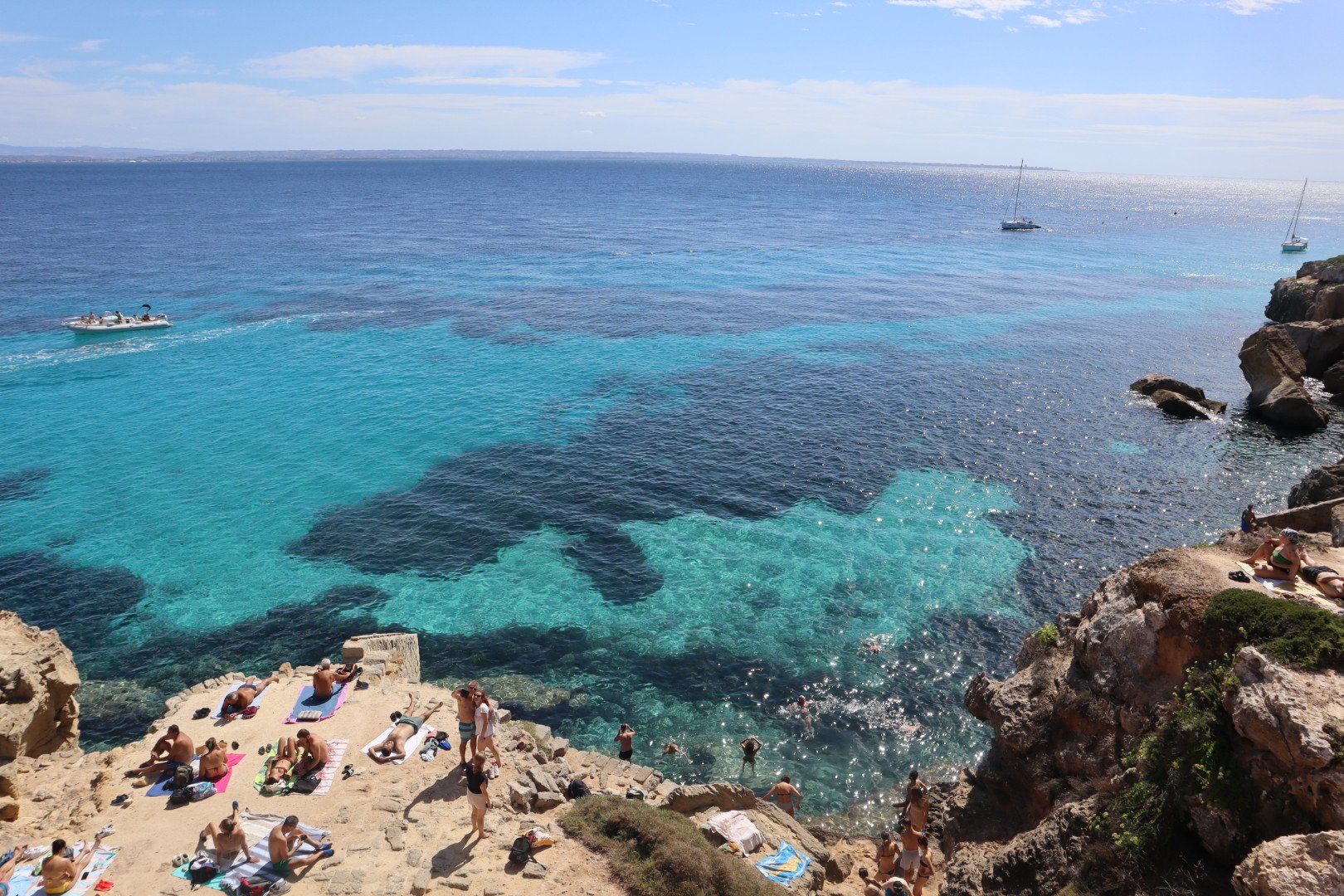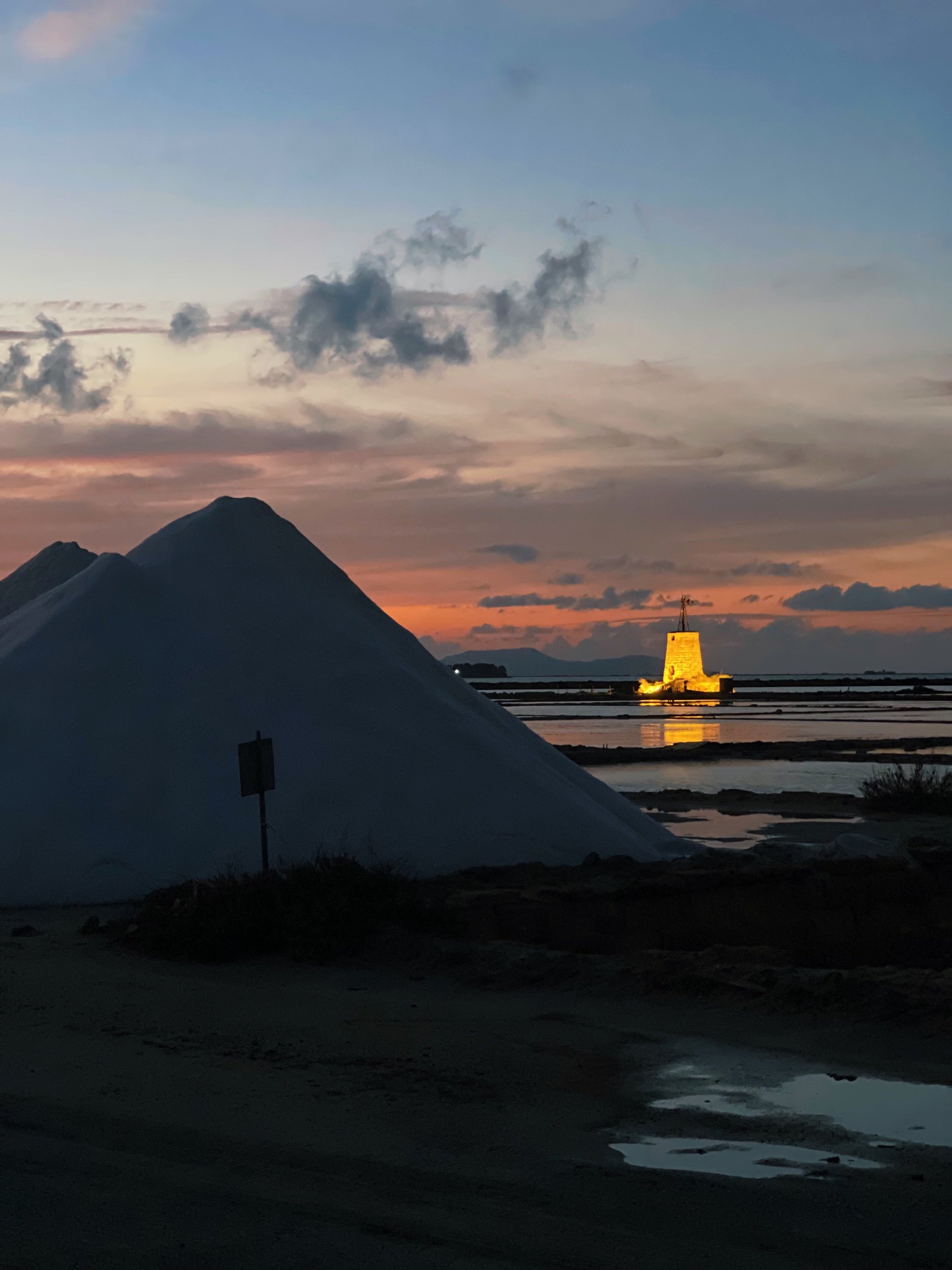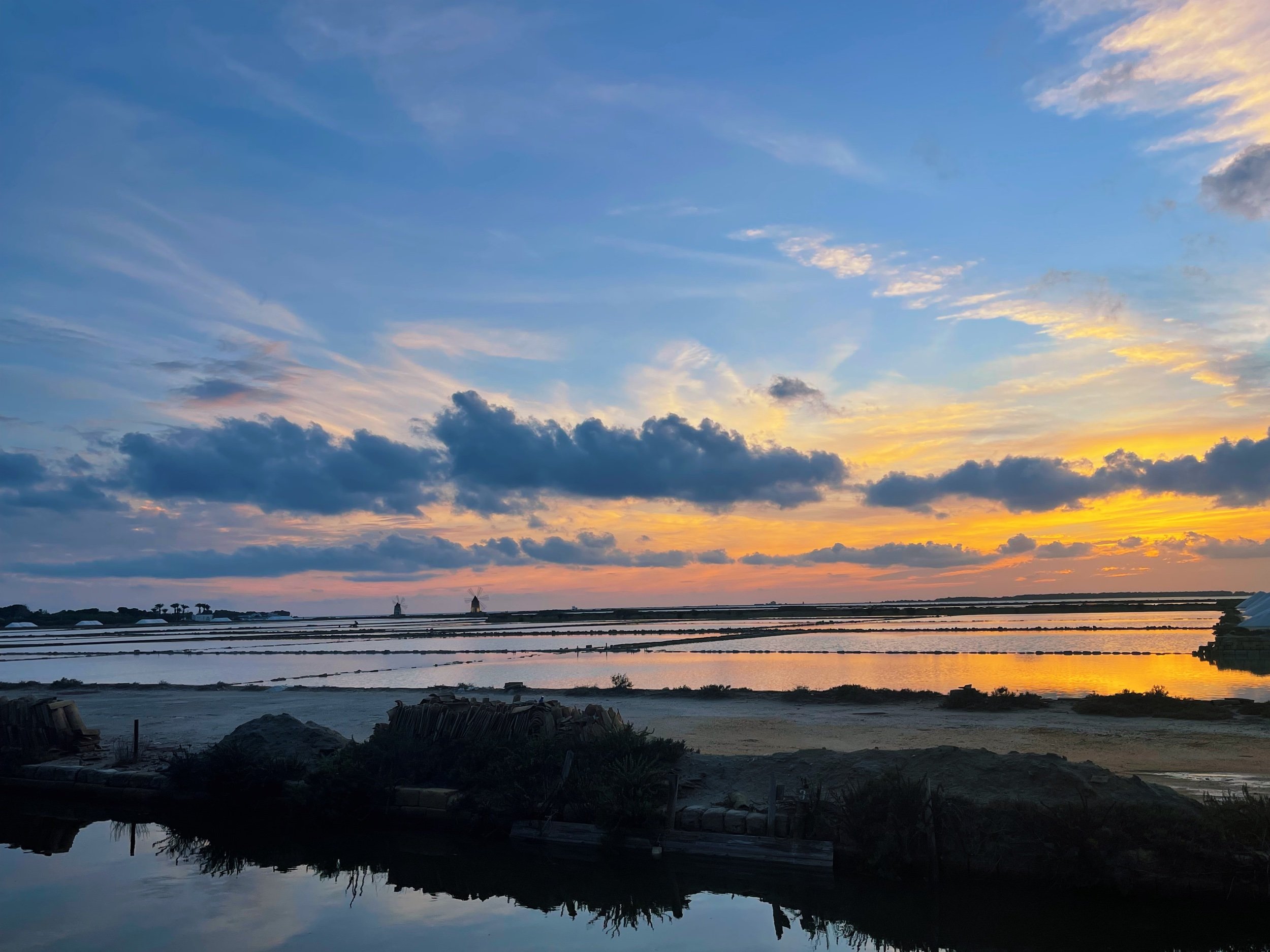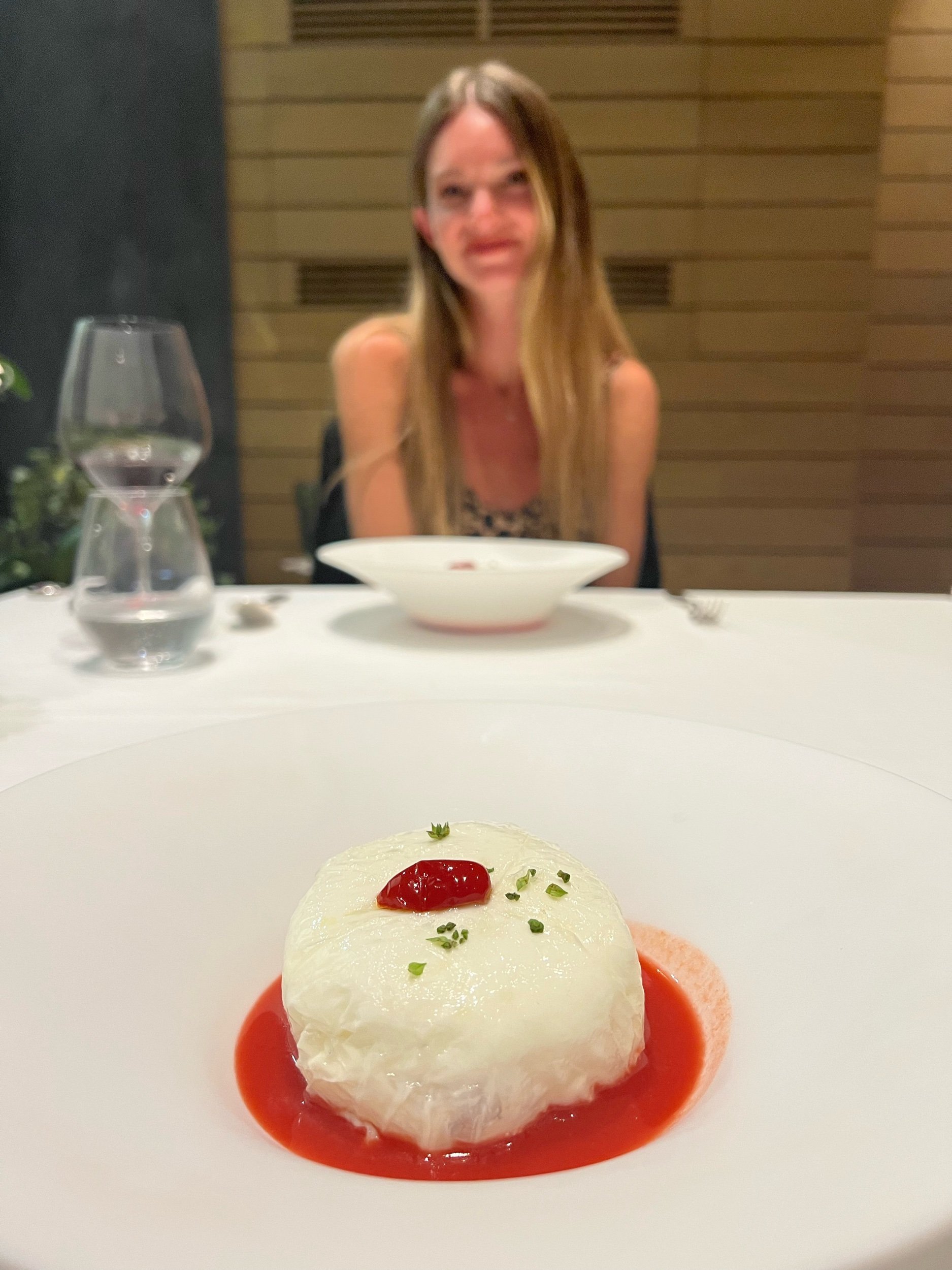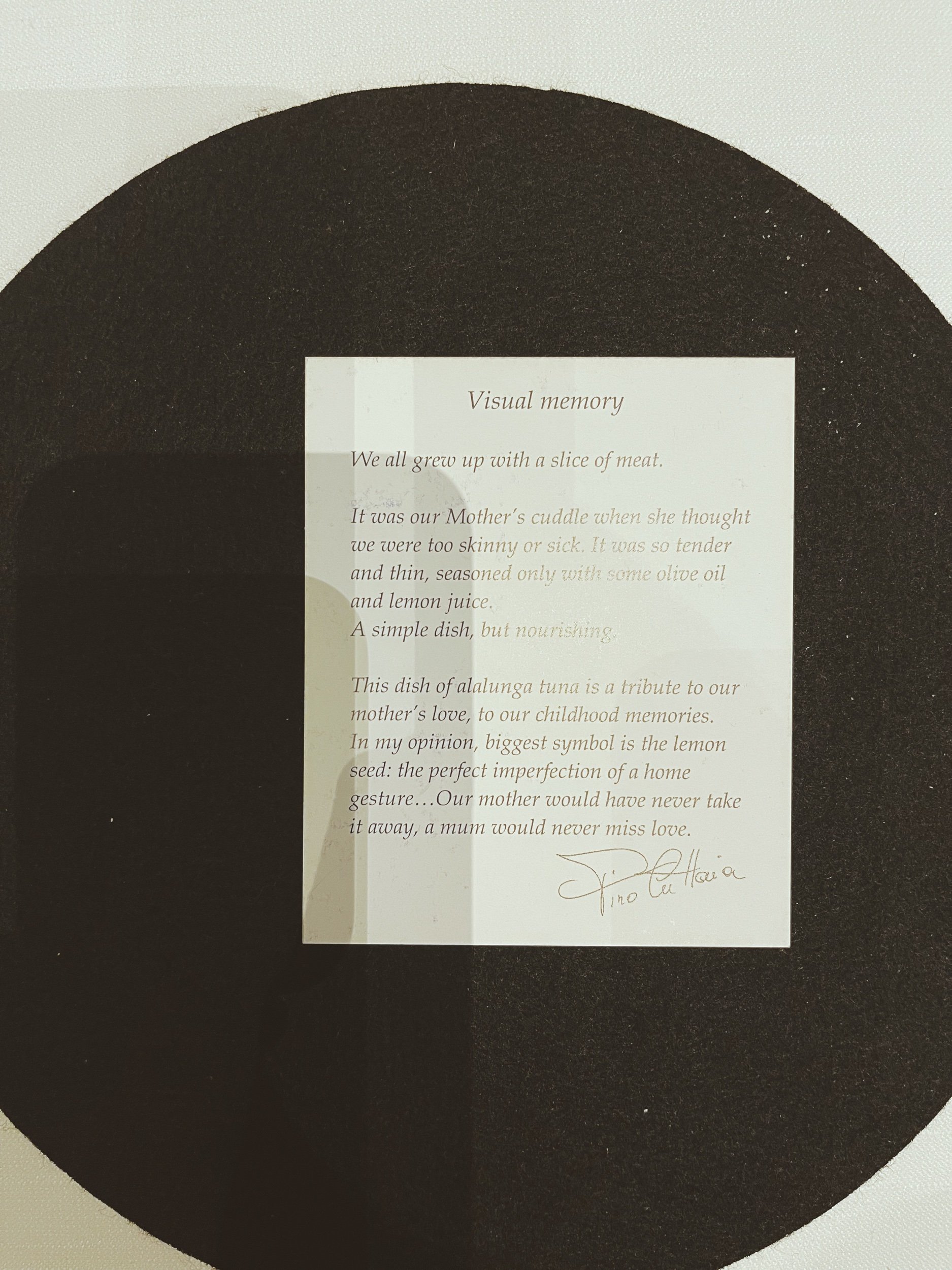Western Sicilian Adventures
Crystal water and creamy cannolis.
As our car approached the vast landscape that grew west out of the Sicilian capital city Palermo, we took in the natural wonders of Sicily for the first time. Mountains covered the skyline wrapped with planation grasping at their ledges. Towns with rectangular white buildings sunk into the valley cooled by the coastal breeze. Paint strokes of pale green waters morphed into a bright turquoise then a deep blue hue as I looked out to the uninterrupted oceanic landscape beyond. Speeding down the highway as a true Sicilian would do, we were ready to explore the wild west that lay ahead.
We first stopped the coastal village of Scoppello for the afternoon to lounge in the sun and soak in the final weeks of summer. As we entered the grounds we walked down a pristine path, covered with manicured trees and stone walls. Around us, we admired the dramatic coast with rock formations towering above. Prickly bushes and pine clustered together and clung to the stone ridges. We were engulfed in the natural beauty.
After our short jaunt, the path opened up to a large cement terrace dotted with an infamous pink fishing home. Dating back to the 13th century, these grounds had been a tonnaro, a modest Italian tuna fish factory which played a strong role in Sicily’s economy. Today, the terrace was covered with beach chairs, sun hats, and energetic travelers enjoying the sun - a very different but still thriving economy. It was busy but serene all at the same time. Swimmers made quick plunges into icy waters and quickly swam back to shore to reprieve from the frigid temperatures. We gave it a try and I barely lasted 15 seconds. The sea beyond the coast was empty, nothing but the wind making gentle waves as far as the eye could see. We soaked in the warm sun glowing down, ate Sicilian arancinis we picked up from the Palermo market, and relaxed into our first Italian beach.
A bright yellow beach house came into view as we drove along the coast, just outside of Marsala. This two story home was transformed into four bedrooms and a common area, the perfect place for a cozy bed and breakfast. When we pulled in, a local Sicilian came to the front door with a warm smile. Upon stepping inside, we saw the walls decorated with eclectic paintings and older knick knacks. An assortment of antique furniture spread throughout the rooms giving a rustic, welcoming feel. On the top floor, a large deck broadened out to small salt pan fields and open waters.
Each morning we were greeted to an Italian breakfast. The extent of my Italian breakfasts started and ended with espresso. Until this point, I had no idea such tradition existed. But to my surprise, an array of plates were set in front of us overflowing with a variety of pastries. We nibbled on apricot filled croissants and spinach danishes, reveling in each buttery bite and velvety texture. But it was the cannoli that really hit the spot - the quintessential sugar rush to catapult each day. This Sicilian pastry is infamous for its rich ricotta filling and flaky shell. A perfect blend of cream, crunch, and sweetness develops into an irresistible treat. Biting into this cannoli shell was soft, almost airy. The texture was light like a croissant that slowly melted away with each bite. Sweet flavors of ricotta sieved into a creamy smoothness too good not to finish - even at 8:30 AM.
Eager for more time by the the water, we ventured off to Isola do Favignana, a small island situated off the northwestern coast of Sicily. Known for its dusty roads and clear waters, we knew this would be the perfect locale to spend a Sicilian late summer day. The island exuded a gentle pace as soon as we arrived. Travelers rented bikes and cruised down sand-speckled paths. As we rode to our first stop, we came across a small stand that resembled a large orange. Granita was a popular Italian slushy that is sold in most Sicilian beach towns. While some customers spike theirs with a liquor of their choosing, we ordered the traditional lemon flavor - the perfect way to cool down from the morning sun.
Now time for the beaches. A small rocky path lined the sea green waters, just big enough for travelers to plop down and enjoy the sparkling views of Cala Rosa, the first stop on our journey. In the distance, a silhouette of another island carved into the clear skies and we watched catamarans bob in the sea like floaties. While incredibly rocky, Michael successfully made his way down to the water for a quick dip before we ventured to our next stop.
We jumped on our bikes and headed to Blue Marino, the most anticipated beach on our island expedition. A wide rockface overlooked the clear skies beyond as we arrived at our destination. We inched our way closer to the edge and small walking paths with smooth rocks came into view that went all the way down to the sparkling waters - a sun bathers dream. People were out, lounging in the sun and listening to the waves crash into the cliffs. You would have never known it was a Tuesday. The waters morphed from bright blue to dark navy, creating abstract patterns like children’s coloring books. We spent most of our day here, taking in the view, watching locals spend their day in the sun, and indulging in the infamous tuna sandwich from the truck just a few meters away.
We made it back to mainland Sicily just in time for sunset and headed straight for the Marsala salt pans. Huge windmills sprouted among large square-like pools, filled with water that was used for salt extraction. It was an exceptional site to take in and seeing it at dusk made it that much more special. The sun’s rays radiated the pools and the entire area glowed a golden pink. We enjoyed the views while sipping aperol spritzes and reliving our time on the beach.
Our time in Western Sicily was capped off with an unforgettable meal at La Madia. And while each dish set in front of us had captivating qualities and mouthwatering flavors, it was the story of the restauarnt that left a lasting impression. We ventured out to Licata, a very small town Sicily, to experience this gastronomic treasure. Chef Pino Cuttaia opened La Madia in 2000 to bring people into the small town he grew up. His entire concept was based around deepening visitor knowledge of a place held dear to him. The restaurant’s interior pays homage to different Sicilian landscapes with wooden and stone features throughout the space. The dishes are meant to instill culinary memories from the chef’s past as he experiments with local ingredients and flavors he remembers as a child. But his innovation was truly standout. The Cloud of Caprese was an inventive take on the traditional caprese salad, with the cheese in a foamy presentation that was soft to the touch. And of course I will never forget the cannoli. The rich but bouyant textures floated in my mouth like a cloud. In many ways, it felt like the chef had brought us into his home and gave us a small taste of what Sicily meant to him.

